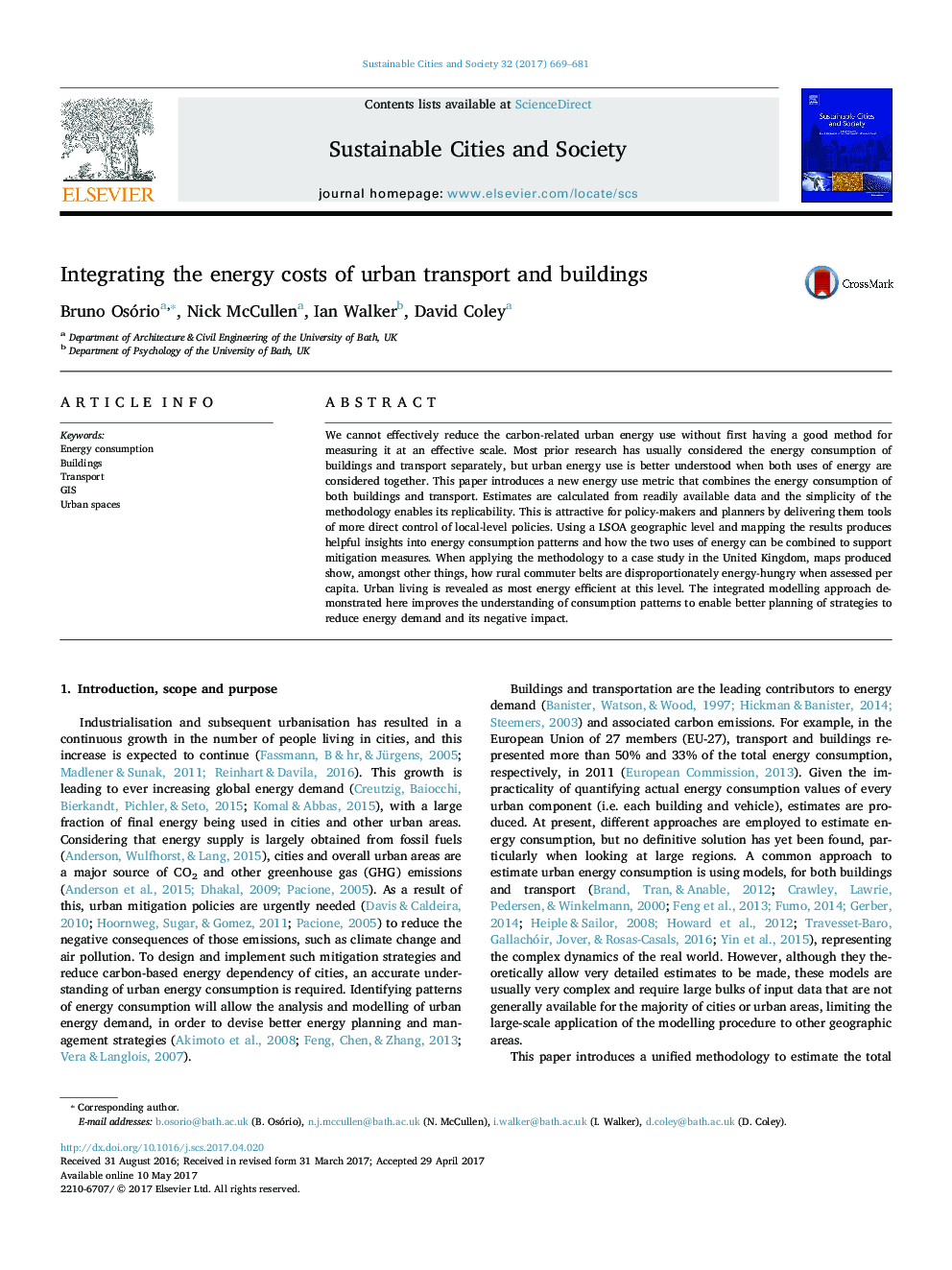| Article ID | Journal | Published Year | Pages | File Type |
|---|---|---|---|---|
| 4928040 | Sustainable Cities and Society | 2017 | 13 Pages |
Abstract
We cannot effectively reduce the carbon-related urban energy use without first having a good method for measuring it at an effective scale. Most prior research has usually considered the energy consumption of buildings and transport separately, but urban energy use is better understood when both uses of energy are considered together. This paper introduces a new energy use metric that combines the energy consumption of both buildings and transport. Estimates are calculated from readily available data and the simplicity of the methodology enables its replicability. This is attractive for policy-makers and planners by delivering them tools of more direct control of local-level policies. Using a LSOA geographic level and mapping the results produces helpful insights into energy consumption patterns and how the two uses of energy can be combined to support mitigation measures. When applying the methodology to a case study in the United Kingdom, maps produced show, amongst other things, how rural commuter belts are disproportionately energy-hungry when assessed per capita. Urban living is revealed as most energy efficient at this level. The integrated modelling approach demonstrated here improves the understanding of consumption patterns to enable better planning of strategies to reduce energy demand and its negative impact.
Related Topics
Physical Sciences and Engineering
Energy
Renewable Energy, Sustainability and the Environment
Authors
Bruno Osório, Nick McCullen, Ian Walker, David Coley,
